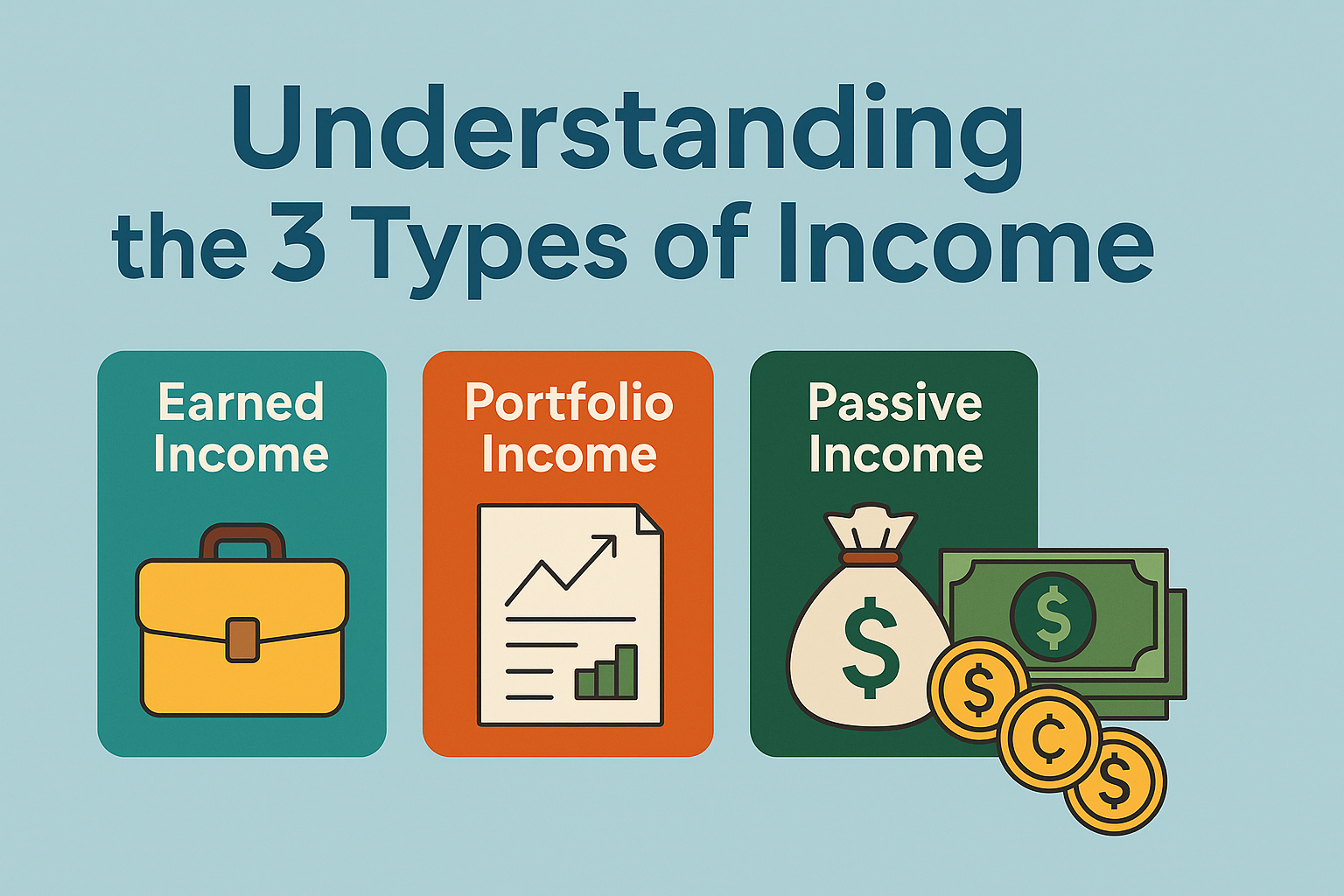Understanding the 3 Types of Income (and Why It Matters for Your Financial Future)

If you’re serious about improving your finances—whether you’re working full-time, building a side hustle, or navigating retirement—you need to understand the different types of income. Most people only focus on earned income (what you make at a job), but that’s just one piece of the puzzle.
To build real, lasting wealth—and more importantly, freedom—you need to know how the three types of income work and how to shift your strategy to create more of the kinds that serve you long term.
Let’s break them down.
1. Earned Income (Also Called Active Income)
This is the type of income most people are familiar with. It includes wages, salaries, tips, and commissions—any money you earn by trading your time and skills for cash.
Examples:
- A full-time job
- Freelance writing
- Consulting gigs
- Delivering food or driving rideshare
The biggest downside? If you stop working, you stop getting paid.
Most of us were taught to rely solely on earned income. It’s predictable, it’s familiar, and it’s usually how we start out in life. But the trap is this: there are only so many hours in a day, and as you age, the physical and mental energy required for earned income becomes harder to sustain.
Key takeaway: Earned income is important—but it’s not enough on its own if you want freedom.
2. Portfolio Income
This is money made from investments—stocks, bonds, mutual funds, real estate appreciation, and even gains from selling a business.
Examples:
- Stock dividends
- Selling a house for a profit
- Capital gains from crypto or mutual funds
- Earnings from flipping websites or domains
Portfolio income requires some capital to get started, which is why many people assume it’s only for the wealthy. But that’s a myth. Even with a modest monthly investment into something like an index fund, your money can begin working for you while you sleep.
The trick is to start early, stay consistent, and reinvest your gains.
For retirees, portfolio income can be especially powerful. A well-diversified portfolio can supplement Social Security or pension payments and provide more breathing room in your monthly budget.
Key takeaway: Portfolio income makes your money do the work instead of your body. You can start small and grow it over time.
3. Passive Income
This is where things get really exciting.
Passive income is money that continues to come in even when you’re not actively working for it. Unlike portfolio income, it doesn’t always rely on financial investments—sometimes, it’s about investing your time upfront.
Examples:
- Royalties from books, music, or digital products
- Affiliate marketing
- Rented property or equipment
- Online courses or memberships
- Residual commissions from network marketing
- Monetized YouTube channels or blogs
Now let’s be real: passive income is not instant. It usually takes a lot of work upfront. But once the systems are in place, you can earn income 24/7—even while you’re on vacation, spending time with your grandkids, or enjoying your retirement hobbies.
If you’re building an online business or side hustle, passive income should be your end goal.
Key takeaway: Passive income is the ultimate path to time freedom. Build assets, not just tasks.
Why This Matters (Especially for Retirees and Aspiring Entrepreneurs)
If you’re relying on earned income alone—whether from a job or Social Security—you’re always one emergency away from a financial setback.
By diversifying your income streams, you’re not just making more money—you’re future-proofing your finances.
This approach gives you flexibility. More income means:
- Less stress about rising prices
- The ability to travel or help family
- Freedom to say “no” to work that doesn’t serve you
- A sense of security and confidence in uncertain times
Even if you’re starting late, it’s not too late.
Many people in their 50s, 60s, and 70s are building digital products, learning affiliate marketing, investing small amounts, and creating businesses that make money without burning them out.
Your Next Step
Take a look at your current income sources. Are they all active? Could you begin shifting your time or money toward creating more passive or portfolio income?
You don’t have to overhaul your life overnight. Small, consistent moves—like creating a blog, starting a side business, or putting $50 into a dividend ETF—can start building momentum.
If you’re ready to explore practical ways to generate income from home, especially designed for beginners and retirees, check out our featured opportunity below this article. It’s low-cost, beginner-friendly, and it’s helping people just like you build real income online.

